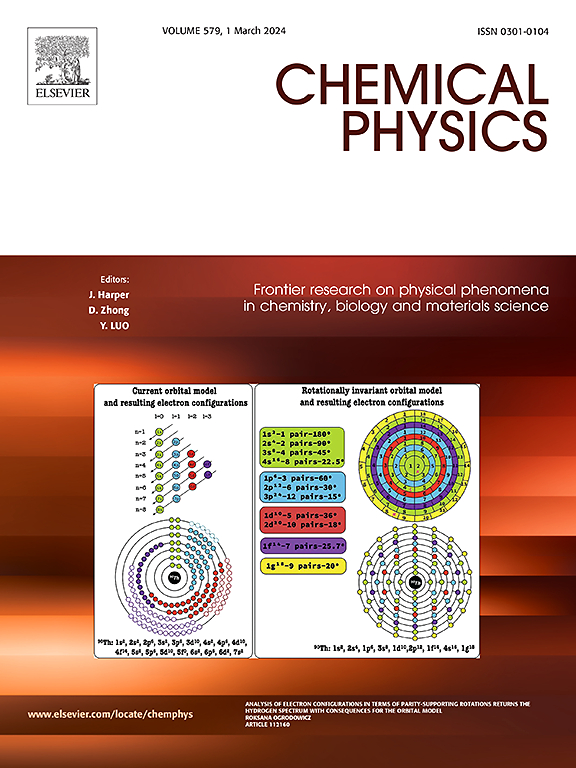掺杂过渡金属的氮化铝和氮化镓量子点对二氧化碳还原作用的增强:DFT 研究
IF 2
3区 化学
Q4 CHEMISTRY, PHYSICAL
引用次数: 0
摘要
本文章由计算机程序翻译,如有差异,请以英文原文为准。

Enhanced CO2 reduction on transition metal-doped AlN and GaN quantum dots: A DFT study
Two-dimensional AlN and GaN quantum dots were studied using density functional theory (DFT) to explore the effects of doping with light elements (C, Si, O, S) and metal atoms (Mo, Rh, Ag, Os, Ir, Au, Bi, As, Sn). Binding energy and vibrational frequency analyses confirmed the stability of the structures. Pristine nanodots were found to be insulators with a wide energy gap (~5 eV), which decreased significantly with doping, reaching 1.90 eV and 1.62 eV for S and Ag, respectively. UV–vis spectra supported the electronic calculations, showing a similar decrease in the optical gap. While pristine GaN and AlN required high energy for CO₂ reduction, doping with metals, particularly Rh and Ir, significantly lowered energy barriers for *COOH and *CO formation and CO release. Additionally, Rh and Ir-doped quantum dots demonstrated selectivity for CO₂ reduction over hydrogen evolution, highlighting their potential as efficient catalysts for sustainable CO₂ conversion.
求助全文
通过发布文献求助,成功后即可免费获取论文全文。
去求助
来源期刊

Chemical Physics
化学-物理:原子、分子和化学物理
CiteScore
4.60
自引率
4.30%
发文量
278
审稿时长
39 days
期刊介绍:
Chemical Physics publishes experimental and theoretical papers on all aspects of chemical physics. In this journal, experiments are related to theory, and in turn theoretical papers are related to present or future experiments. Subjects covered include: spectroscopy and molecular structure, interacting systems, relaxation phenomena, biological systems, materials, fundamental problems in molecular reactivity, molecular quantum theory and statistical mechanics. Computational chemistry studies of routine character are not appropriate for this journal.
 求助内容:
求助内容: 应助结果提醒方式:
应助结果提醒方式:


